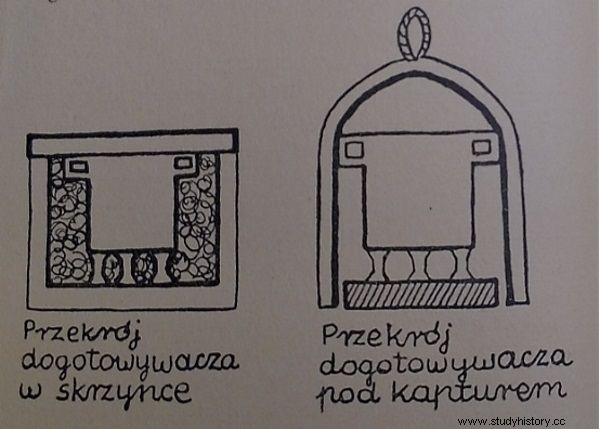We were hit by an extreme situation. There is nothing to breathe in the cities. Krakow's smog is so thick that even the Wawel Dragon cannot cope. You have to tighten the belts and finally stop smoking. We have a great historical way for you to reduce poisoning.
I thought that such things did not happen, and if they do, it certainly does not happen to me. When I received a call from Magda, a journalist with whom I spoke as part of the "Occupation from the kitchen" promotion , I expected everything but not this. A nice lady Ania from Warsaw called the editorial office of the newspaper, who, having read about my interest in war cuisine, decided to share her family memento from the occupation times with me. Thus, a real treasure fell into my hands.
Four pages covered on both sides with a typewriter, with a set of recipes for "One-pot war dishes, proportion for 5 people", developed by the Main Board of the Association of the Ladies of the House. These are unique materials, more valuable because they are full of personal notes of Aunt Mrs. Ania, written in a beautiful, careful handwriting.
Treasure Discovery
One drawing caught my attention the most. In my book "Occupation from the kitchen" I wrote that obtaining fuel was one of the basic problems in everyday life. In view of this difficulty, it was necessary to spare him as much as possible. One way was to build a home cooker.

Two different boilers. The illustration is taken from the "Don't throw money out the window" guide for the ladies of the house.
When I first read about this system, it seemed a bit bizarre and I had a hard time believing that its use was so common. My impression was wrong. Dogotownik appears, among others, in the guide "Don't throw your money out of the window", in war memories, and also in the notes of Aunt Mrs. Ania. The latter contain a detailed, handwritten description of its implementation and a drawing (thumbnail for the article, on a yellow background):
In a wooden float, place a bottom made of hay, chips or crumpled paper 10-15 cm thick, place the pots 6 cm apart and close the sides. Remove the pots, insert cardboard cylinders and cover with a cloth cover, after placing hot aluminum pots, cover with a mattress - stuffed and a crate.
Economical, or how?
And how did such a booster function and what did it have to do with reducing exhaust emissions? When it was difficult to find fuel, using excess fuel for cooking was a sign of exceptional mismanagement. One of the ways to save money was to put a hot pot or pots into the device. First, the dish had to be boiled for a long time. They were then collected from the kitchen and put straight into the boil, covered with an insulating lid on top.

The female art of survival in Aleksandra Zaprutko-Janicka's book "Occupation from the kitchen".
The temperature of the food on the fire stayed inside the cooker for a long time and then it dropped very slowly. This was enough for the food to slowly drain at first, and then to stay warm just in time for the next hungry family members to return home. Keeping and cooking buckwheat under the quilt works in a similar way (Grandma's method is still widespread in many homes.
This approach allowed to save quite a lot of fuel, so far used every day in the kitchen, for example for reheating, outside the heating season. On the other hand, such a contraption would be useful in many homes today, where gas and electricity bills consume far too much cash. Although it takes a lot of work to build it, and the cooking process has yet to be learned, it is worth trying!
